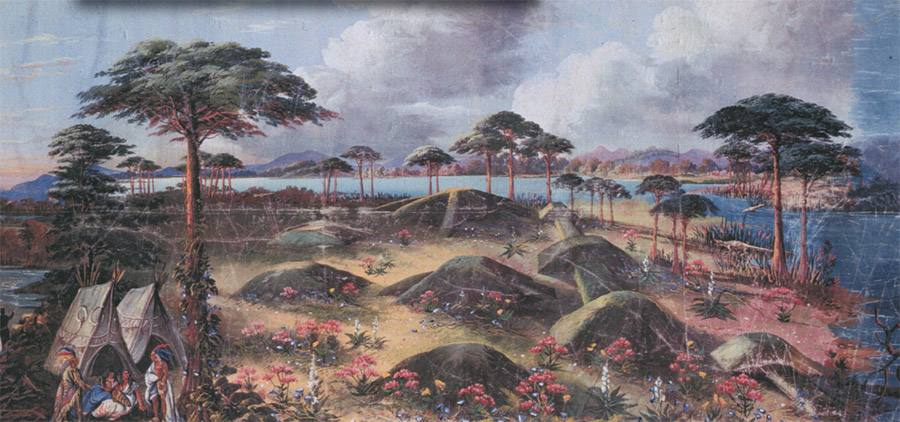A Brief History of Caddo Parish
Caddo Parish takes its name from the original inhabitants of the land, the Caddo Indians. Native American culture developed in the area as early as 10,000 B.C. Evidence found around Mound Plantation and the Belcher Mounds show that communities with farmsteads, housing and elaborate pottery flourished between 395 A. D. to 1250 A. D.
French and Spanish explorers began to arrive in the area in the mid 1500's, which led to an upheaval and eventual migration of the Native Americans.

Louisiana is the only one of the United States to use the word parish instead of county when referring to the administrative geographical regions within the state. This is due to the French influence that remains since the days of the French colonization of the area in 1682. The word parish has ecclesiastical origins, and the territorial legislature's adoption of the term in 1807 denotes the strong influence of the Catholic Church on the French culture of the day.
In 1803, the United States purchased the Louisiana Territory from France for fifteen million US dollars, which amounted to less than three cents per acre. This was the time of the Napoleonic Wars in Europe, a US President Thomas Jefferson sent Ambassador Robert Livingston to France with authorization to purchase New Orleans for ten million US dollars. Embroiled in war with England, losing control of sugar revenues from the Caribbean, and he was not able to defend Louisiana from either the Spanish or the United States, Napoleon proposed selling the entirety of the territory to the US. Though he was not authorized to do so, Livingston, by then joined by Ambassador and future president, James Monroe, accepted the terms. Thus Louisiana, including the land that would become Caddo Parish, became part of the United States of America.
The Red River Raft, or Great Raft, was the name given to a miles long log jam that made the Red River impossible to navigate. The need to open that water way to trade vessels sent Captain Henry Miller Shreve, under contract to the US Corps of Engineers to clear the passageway. By 1838, Captain Shreve had cleared the Red River southward from the Carolina Bluff area, and opening the river to navigation. A major impact to north Caddo Parish was clearing the mouth of Twelve Mile Bayou, which allowed for settlement of the areas west and northwest of what would eventually become Shreveport.
Other than the clearing of the Red River, the greatest economic boost for the towns of north Caddo Parish came with the discovery of oil in the early 20th century. The first oil field in the area was discovered in 1905 around Caddo Lake. An odd but interesting tale for those in the Dixie area is that oil was actually first found in Caddo Parish in 1902 on the property of Ellison Adger; however, Mr. Adger, it seems, was more interested in water for his livestock and didn’t follow up on the black gold under Dixie.

Several small towns sprung up around the Pine Island Field and the Rodessa Field, and boom towns like Gilliam and Hosston flourished for many years. An oil refinery was built in Hosston and shipped out by the Texas & Pacific Railroad. The famous Standard Oil maintained a pumping station in Ida, pumping oil through a pipeline its refinery in Baton Rouge.
Another claim to fame for one of our north Caddo towns is the 50,000 watt KWKH radio transmitter. In the mid 1950’s, KWKH broadcasted programming as far north as Chicago. KWKH was home to the Louisiana Hayride, which launch the careers of such greats as Hank Williams, Elvis Presley, Kitty Wells and Faron Young. The Hayride is no longer around, but KWKH still broadcasts news and music to this day.
The oil may have played out, and the boom towns are much more quiet these days, but the sunflowers still bloom along Highway 3049, the cotton fields still produce yield, the faithful still sing in the churches on Sunday morning, and we who inhabit the Red River crossroads area still celebrate our history.